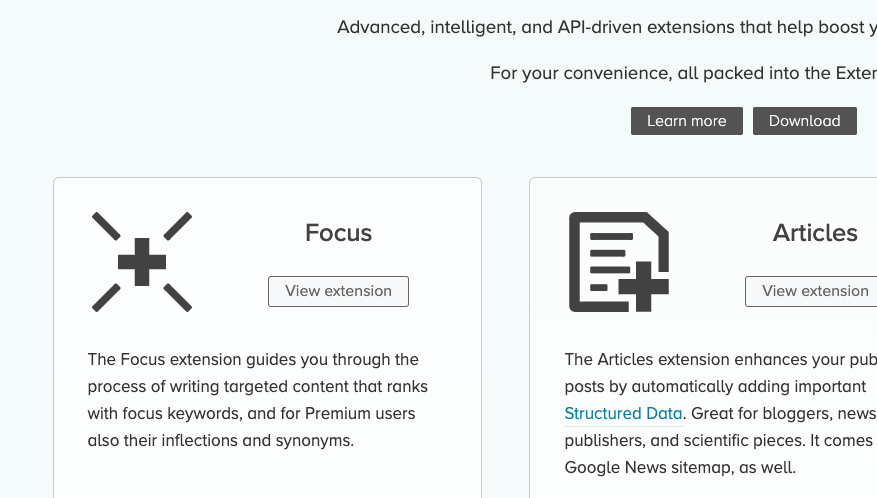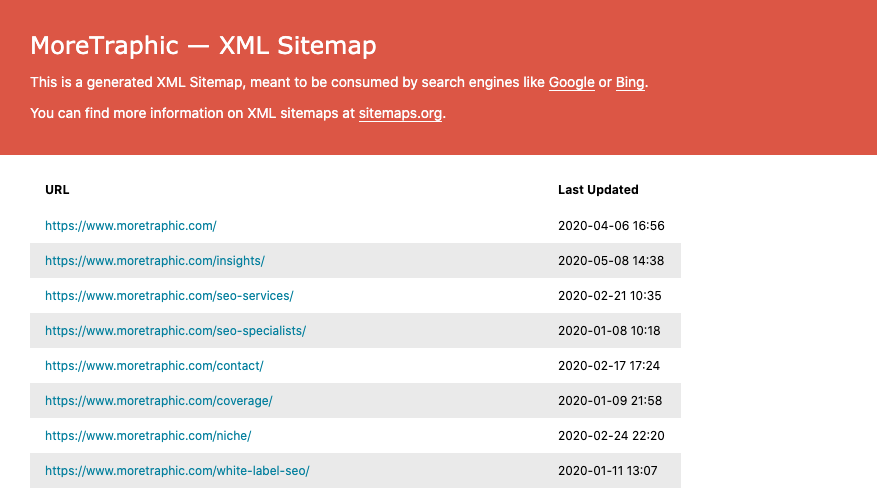If you’re a business owner who uses WordPress, you may have come across Yoast SEO and/or All in One SEO Pack. These are the two SEO plugins usually mentioned, installed 8+ million times combined.
While these are good, complete SEO plugins, frequently updated, each with their pros and cons, there’s another solution that, for me, tops them in the field of WordPress SEO plugins. I want to talk about The SEO Framework.
The SEO Framework emerged as the new kid in town, only seeing the light of day at the end of 2015, while its competitors are already 10+ years in. Last year I discovered The SEO Framework, and I was impressed by its outstanding ratings on the WordPress directory: 5/5 for 189 reviews and 90,000+ installs, which is very unusual for a WordPress SEO plugin.

I installed it on our MoreTraphic site out of curiosity, and I was pleasantly surprised by its simplicity of configuration, speed, and all its features. Given the fact that I have always leaned towards Yoast SEO, I now have a clear preference for The SEO Framework, which does the job perfectly.
The SEO Framework provides all the relevant features to optimise the site for search engines. You can customise everything on a single page.
The plugin comes pre-configured when installing The SEO Framework. We can then add our touch to configure the META, create XML sitemaps, activate breadcrumbs, incorporate external tools such as Google Analytics, Google Webmaster Tools, Facebook, Twitter, Bing, Yandex, Pinterest, etc. All of this is done seamlessly and straightforwardly.
Besides being an easy-to-use SEO plugin, it also provides advanced functionalities like optimising canonical URLs, enabling Schema.org, support for custom post types like WooCommerce and bbPress, customising META not only for articles and pages but also for terms and taxonomies.
What I like about The SEO Framework is its array of handy add-ons that can be added as required. For the most part, they are free, here is the list:
The SEO Framework – Extension Manager

- Focus: The Focus extension walks you through the process of creating relevant content that ranks with target keywords, and also their inflexions and equivalents for Premium users.
- Articles: The Articles extension improves your published posts by seamlessly inserting relevant Structured Data. Suitable for authors, news publishers, and research pieces. It comes with a sitemap for Google News, too.
- Honeypot: The Honeypot extension traps 99.98% of comment spammers across four lightweight but effective methods.
- Cord: The Cord extension lets you connect your website to third-party applications, such as Google Analytics and Facebook pixel.
- Local: The Local extension helps you to set up vital local business information for search engines to use.
- AMP: The AMP extension connects The SEO Framework to the AMP plugin for articles and pages supported by AMP.
- Monitor: The Monitor extension keeps track of SEO changes and statistics on your website.
- Incognito: The Incognito extension removes all comments from The SEO Framework.
- Origin: The Origin extension redirects attachment-page visitors back to the parent post.
- Title Fix: The Title Fix extension ensures that the output of your title is as configured.
Backed by this enticing set of add-ons, The SEO Framework makes it easy to ensure that we have an optimised and efficient site. Its functionalities are comparable to those of Yoast and All in One SEO. However, the speed at which the plugin is loaded trumps both of the above.
Some of The SEO Framework’s Perks at a Glance:
- The SEO Framework is quicker than any other SEO plugin that I’ve used
- No annoying adverts
- You can (almost) use all the functionalities with a free account
- Focus on subjects instead of relying on keywords to encourage better-written content
- Focus on simplicity and SEO best practises
Our Experience Using The SEO Framework
Our new WordPress website has been live for six months now, and for this time, we have been working with The SEO Framework. We use all of the features The SEO Framework has to offer (from the generation of XML Sitemaps to the more advanced SEO settings).
In the page overview, we are a fan of the SEO bar. This offers clear insight into which pages are being and are not being optimised correctly.

We’re a big admirer of the no-nonsense interface on pages. You are driven to write better titles in tandem with the branded title tag. The “audit” fares better than Yoast’s, too.
Why We Switched to The SEO Framework From Yoast SEO
The SEO Framework Provides Much Better Support
A guy named Sybre Waaijer developed The SEO Framework and currently has a 5-star rating with over 100,000+ active installations.
It has 232 5-star reviews, and just one 1-star review, out of 240 reviews in total.
Unlike Yoast, the plugin developer is still incredibly active in the support forum over at WordPress.
All requests for support in the plugin directory of WordPress are addressed quickly, and he is accommodating in providing users with bespoke solutions.
Their team also tracks Reddit and answers questions from people there.
At the same time, my requests for support to Yoast as a paying customer were unhelpful at best. They do nothing but have generic copy-paste answers, and you’re left to sort it out on your own.
The SEO Framework Is Cleaner and Quicker
The UI in The SEO Framework is much simplified, and it’s easy and painless to find the settings you need.
Although Yoast has numerous tabs for its settings (and ads), The SEO Framework only has two — one for the settings and another for additional extensions.
Also, after dropping Yoast and moving to The SEO Framework, my site feels much quicker. This is entirely speculative, and I may be presuming here, but it seems like it is running faster. This has been mentioned online by several other people.
While I don’t know if this is tied to Yoast, I stopped getting a false update prompt in my WordPress dashboard after switching to The SEO Framework.
It used to show that one plugin required constant updates, but when I went into the plugin page, there was nothing to update. Once I got rid of Yoast, the bug went away.
The Premium Edition Is Good Value for Money
The standard version of The SEO Framework is entirely free to use, and it can be downloaded from the plugin directory of WordPress.
The Extension Manager is also free, together with four extensions that offer some essential features.
If you wish to use all of the premium features, a premium subscription to The SEO Framework is required.
The paid edition costs £5.66/month with all the extensions and allows you to use the plugin on two websites.
Yoast charges a staggering £169.10 per annum for its pro edition for two sites. That is absurdly overpriced.
The SEO Framework XML Sitemap Works Better
Having an XML sitemap and submitting it in the Google Search Console is a standard SEO best practice.
The sitemap cites all your pages and posts, and is used to notify Google on what URLs to look for (as well as Bing).

Though this can be done with a separate plugin, by default, most popular SEO plugins provide this feature. This includes The SEO Framework and also Yoast.
I had a lot of trouble with the XML sitemap generated using the Yoast plugin.
When submitting the sitemap to Google Search Console, I would regularly get an error on new sites. It would say, “Couldn’t fetch” and “Sitemap couldn’t be read”. Funnily, the error would go away after a short time, as if after a couple of days or a few weeks, Google could suddenly read the sitemap.
For a number of our sites, this was an issue, and I was convinced that it was a bug in the Google Search Console. But they were working when I moved to The SEO Framework and uploaded the new sitemaps.
After looking in various support forums, there have been a lot of people having the same problem. But it does not seem like the Yoast Team has a clear solution.
This may be just a bug in the Google Search Console. However, The XML sitemaps by SEO Framework worked instantaneously while there were errors in the Yoast sitemaps.
Summary
What we like about WordPress is how many choices you have when it comes to plugins, no matter what functionality you would like to add to your website.
The SEO Framework offers a great experience. It provides a whole host of easy-to-use features. We want to say that, given some out of the box omissions, it’s very close to getting to Yoast SEO as far as the features go. If you are searching for a new SEO plugin, this one is worth a look at.
